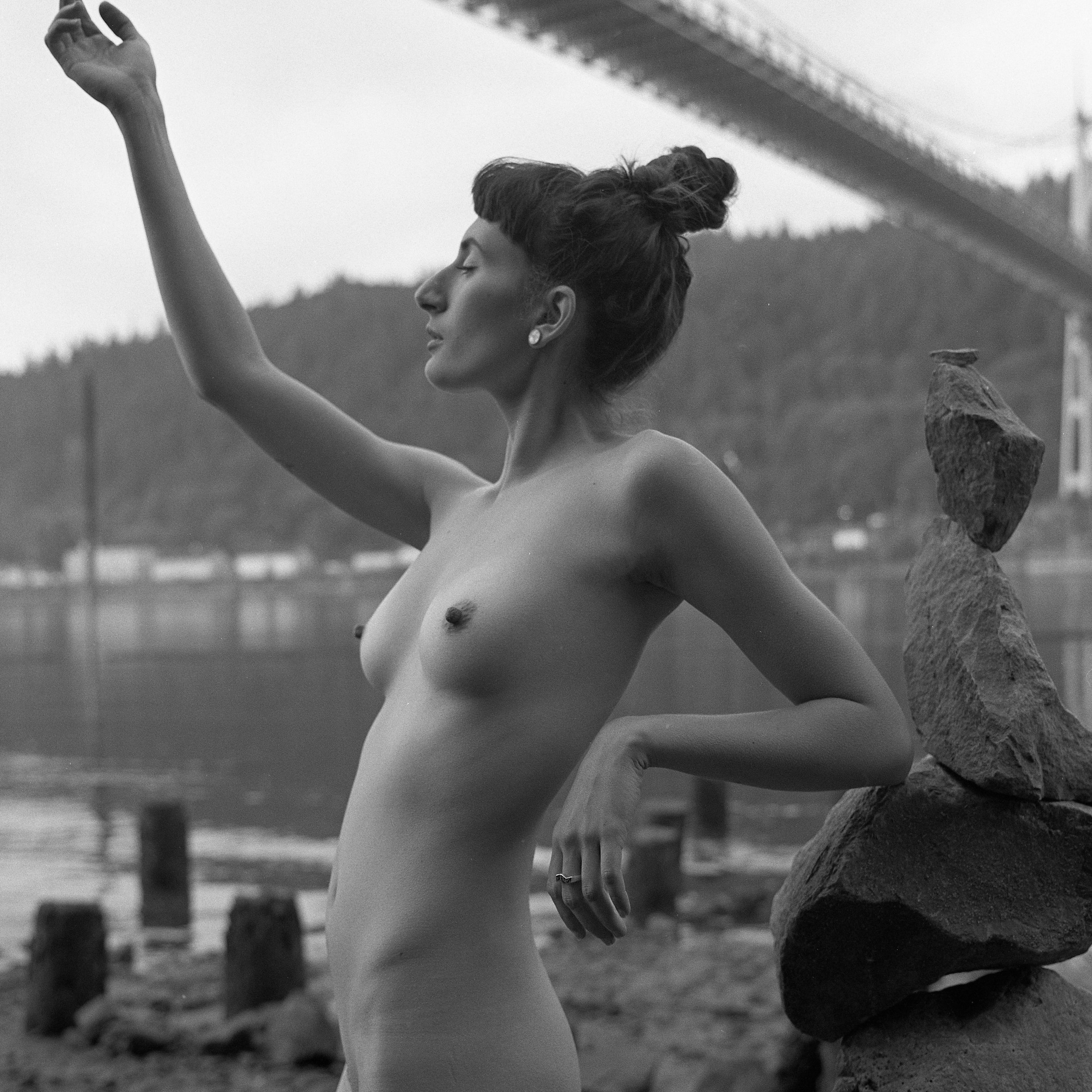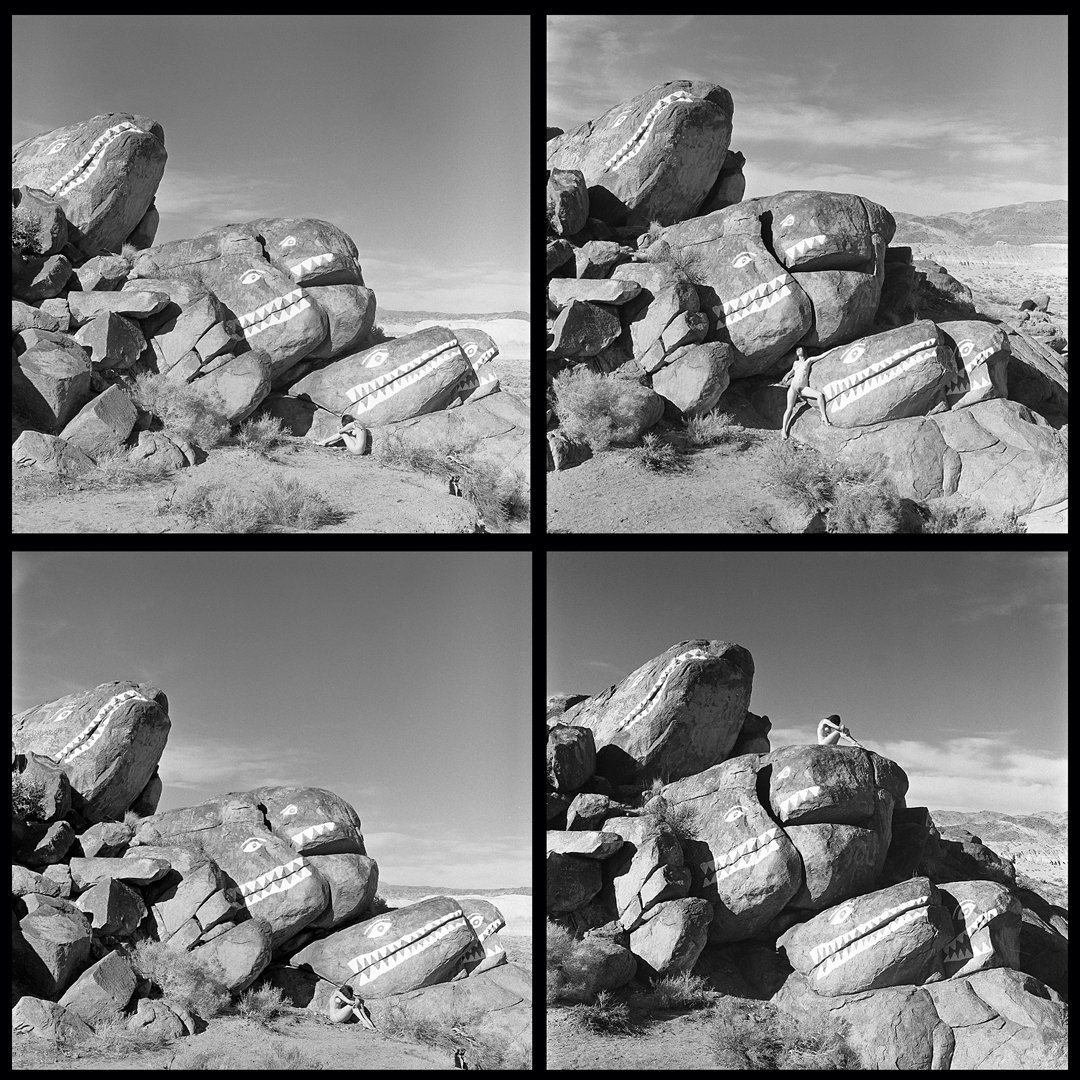
Panon Widelux Portraits
Using the unique qualities of the Panon Widelux to experiment with portraits in the studio. There is really no way to approach this technique scientifically, which is part of the fun really. There are a few frames on the roll that turned out great!

Slower Speed 35mm Film (Rollei RPX 25)
I don’t often work with slow speed film, though I probably should. Working with Rollei RPX 25 produces brilliant results on 35mm film. It can be tough to keep the contrast under control, but when well exposed I really just can’t fault the results.

When The Camera Becomes A Prop
It is a bit of a cliche for photographers to hand their camera to a model and photograph them making an image back at you. Pretty much every fashion photographer, portrait photographer, and figure study photographer has done it. I am by no means an exception here. I’ve done it plenty. In fact, I’ve done it a lot!!

First Shot With A Pentax 67
Taking a Pentax 67 out for a test drive. There is just no denying the big 6×7 negatives are breathtaking to look at and scan incredibly easily. I’m sure I’ll be using this camera a while lot more.

Panon Widelux F8 - First Roll
The Panon Widelux has got to be one of the most unique cameras ever invented. It has a unique “swivel” lens that creates panoramic images on a roll of 35mm film. These images are from my very first roll of film with the camera.

Tiny Details Make A Difference
As a photographer I sometimes obsess over tiny details. Of course it may seem silly to consider the placement of the model in your frame as a “tiny detail”.

Tutorial: Rodinal Stand Development
Rodinal has been my primary black and white developer for decades. It’s cheap. It stores forever. It delivers results that I find pleasing to the eye. One of my favorite development techniques with Rodinal is to stand develop.

Chicago With The Hasselblad SWC
Exploring downtown Chicago with my Hasselblad SWC. I actually find the SWC to be a great camera for street photography. In many ways it can operate like a small(ish) point and shoot camera. I have to resort to the sunny 16 rule for exposure, but that has never bothered me.

Fujifilm Neopan Acros II: Two In The Studio
Two images in the studio made with Fuji Acros II medium format black and white film. I absolutely love Fuji Acros and don’t work with it often enough!

Final Images Of 2024
My last photo session of the year 2024 was a productive one. I rented a studio in downtown Portland and decided to keep things simple. A Hasselblad camera and natural light. What more does a photographer need?